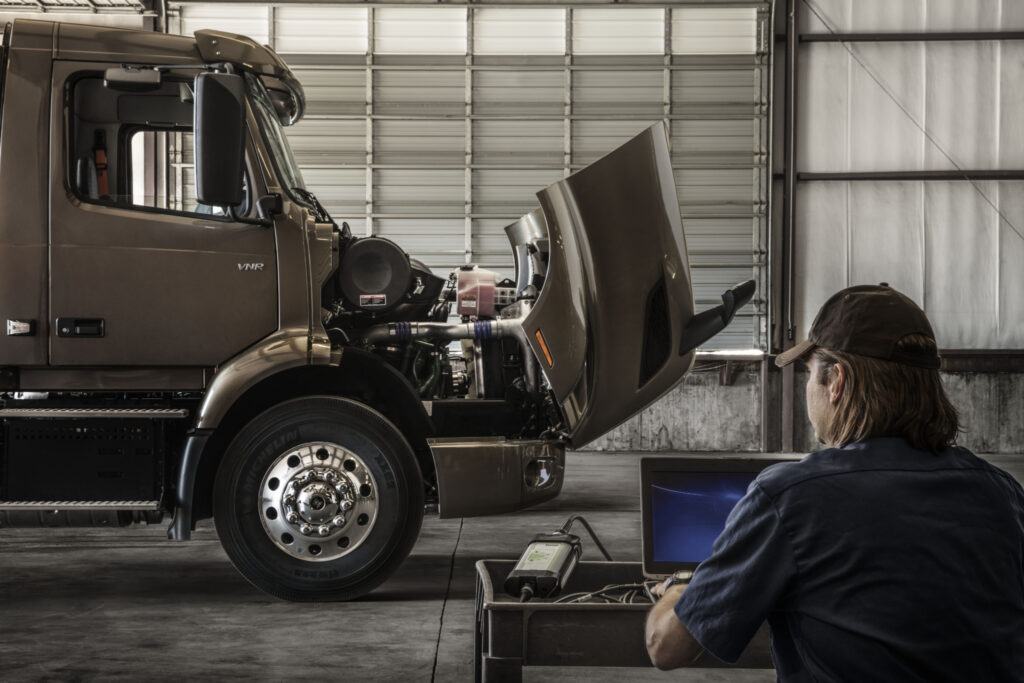Labor rates on the rise, but parts shortages appear to be easing
Canadian repair shops led the charge last year, when it came to technician efficiency and utilization, but lagged behind their U.S. counterparts in the categories of profit margins and parts markups.
The findings emerge in the State of Heavy-Duty Repair report, compiled by Fullbay, and released at the spring meeting of the Technology & Maintenance Council (TMC).

The 80-page report revealed several notable trends, including that 74% of shops raised their labor rates in 2022 by anywhere from $7.10 an hour (all figures U.S.) for smaller shops, and up to $14.60 an hour for shops with 21-40 technicians. Geographically, the Southwest raised rates the most at $13.10 an hour, while Canadian shops put in labor rate increases averaging $10.90 per hour.
Labor rate increases were necessary to increase technician pay. Of those shops that hiked their labor rates, 92% increased technician pay, noted Fullbay CEO Patrick McKittrick. Only 40% of shops that didn’t raise labor rates were able to increase technician pay.
“You still have shop owners who feel bad about it,” McKittrick said of survey respondents and labor rate increases. “It’s something that needs to be done. Every single thing is getting more expensive – it’s OK to raise rates.”
He said shops that didn’t increase labor rates in 2022 will be pressured to do so this year to retain technicians.
Technician compensation rising
Canadian technicians earned an average $44.80 an hour, according to the report, and that was higher than all U.S. regions with the exception of the U.S. southeast, where they earned $46 an hour. The lowest technician pay was a comparably paltry $35.10 in the midwestern states. Canadian technicians earned an average of $7,240 a month (pre-tax), again second only to the southeast region.
How technicians are paid is also evolving. Forty-six percent of technicians are paid by the hour, while 28% are paid a flat rate by job. Another 23% of technicians receive some form of hybrid compensation.
“There’s a growing movement to pay technicians on a per-job basis versus per-hour basis,” McKittrick said. “There are very definitive guidelines on how long specific jobs should take. More shops are moving to billing that exact amount of time regardless of the time it takes the technician to do that job. If the book says two hours and the technician finishes it in 90 minutes, they’re going to bill for two hours and pay the technician for two hours.”
Hourly wage increases for technicians varied widely in 2022, by size of shop. Larger shops with 41 or more technicians increased wages an average of $8.20 an hour, while small shops with only one or two techs increased pay just $3.10 per hour.
Efficient Canadian shops
Canadian shops are the most efficient in North America, with a technician efficiency rate of 88% and utilization rate of 79%. Efficiency measures how quickly a technician does a job, while utilization reveals how well techs are utilized.
“Efficiency follows utilization,” Glen Grader, owner of Integrity Fleet Services, said in the report. “We focused on getting our technicians to at least 80% utilization. From there, it was easier to increase overall efficiency. All the added efficiency drops straight to our bottom line.”
Canadian shops also had the highest average invoice size in 2022, at $1,242 – well above any of the U.S. regions included in the report. It also had just the second highest labor rate at $119 per hour, behind the western U.S. at $137 per hour.
The study found technicians are quite loyal to their employers. Nearly half (49%) have spent more than 80% of their career with their current employer. Older mechanics, 55 years and older, averaged 23 years with their current employer.

Parts and inventory
Canadian shops may have among the best-paid technicians, but they lag their American counterparts when it comes to profit margins and parts markup. Of the six regions surveyed, Canada had the lowest profit margins (21%) and parts markups (27%).
This may be small comfort to fleets that are seeing their overall repair costs rise due to the increasing costs of parts and technician pay.
Parts managers and shop owners have adapted to the current parts shortage by stocking more than they traditionally would. Twenty-nine per cent said they currently purchase what’s needed “and a lot more”, while 46% say they purchase what’s needed “and a little more.” Thirteen per cent actually purchase what’s needed and buy out the remaining stock.
Most shops (85%) allow customers to supply their own parts for a repair, but few will provide a warranty on such parts. Shops are also getting more resourceful in how they source parts, with 52% admitting they are “frequently” purchasing parts from outside their normal suppliers.
Only 10% of shops said they haven’t experienced disruptions due to the parts shortage. The situation does appear to be improving, however. In 2021, 17% of responding shops said the ability to source parts was an “absolute mess.” That pulled back to 14% in 2022.
Likewise, in 2021, 37% of shops said it took “a lot longer” than usual to get parts, falling to 25% in 2022.
Cost increases slowing
The good news for fleets comes in the form of another study service management platform, Decisiv, conducted with TMC. It suggests the pace of cost increases is slowing, based on Q4 2022 data. The report found that parts and labor cost increases “did slow by the end of 2022 as compared to the previous year.”
“The overall positive improvement in parts and labor costs shows that despite economic headwinds and supply change challenges, commercial vehicle service operations continued to successfully offset increases driven by factors outside of their control,” said Dick Hyatt, president and CEO at Decisiv.
In the fourth quarter of 2022, parts and labor costs rose 13% year over year, Decisiv found. That’s down from the 15.3% increase fleets saw in annual comparisons between quarters earlier in the year. Declines in costs were actually seen between the third and fourth quarters of 2022, when parts costs went down 1.6% and labor rose just 0.4%, for a combined decrease of 0.9%.
“All of the latest data is a clear indication of a trend toward lower service costs as well as total cost of ownership for fleets,” Decisiv concluded, in what will be a well received dose of good news for fleets. “However, as it is unlikely that lower parts prices and reduced labor wages are responsible, other factors are most likely influencing cost decreases.”
This may include a slowing in truck freight demand, resulting in less mileage, the company says. The arrival of long-awaited new trucks should also reduce demand for parts and repairs.
Have your say
This is a moderated forum. Comments will no longer be published unless they are accompanied by a first and last name and a verifiable email address. (Today's Trucking will not publish or share the email address.) Profane language and content deemed to be libelous, racist, or threatening in nature will not be published under any circumstances.